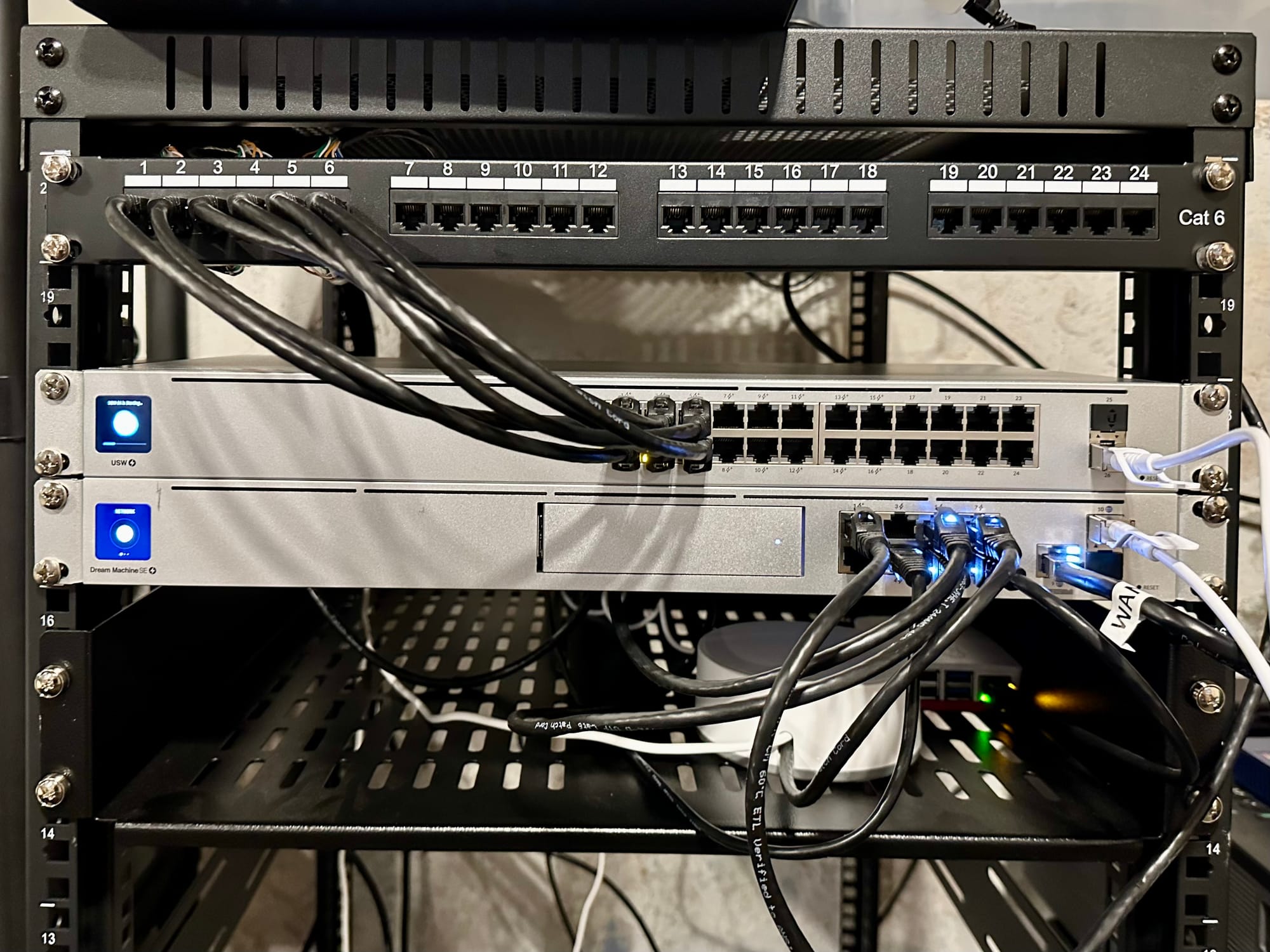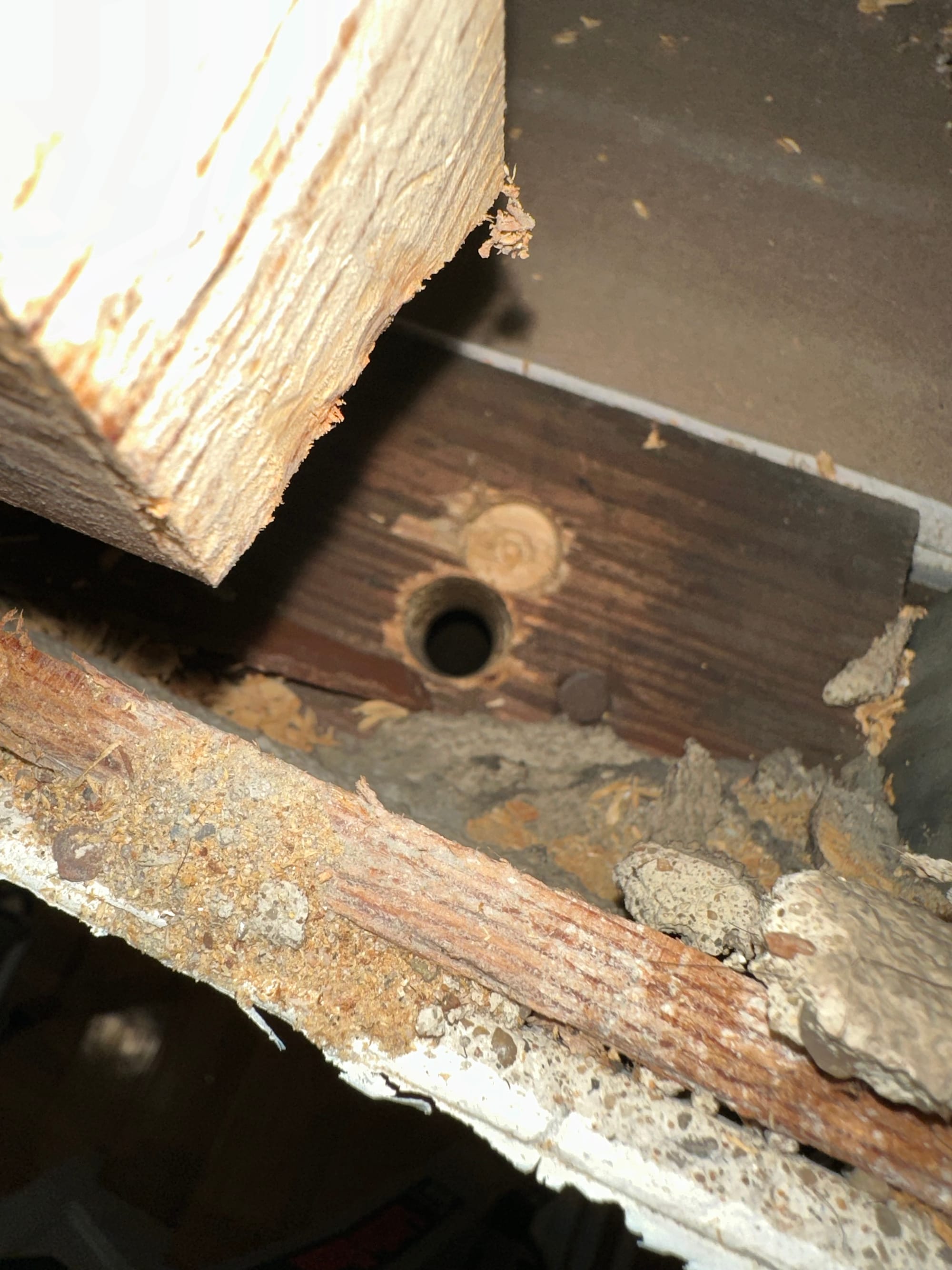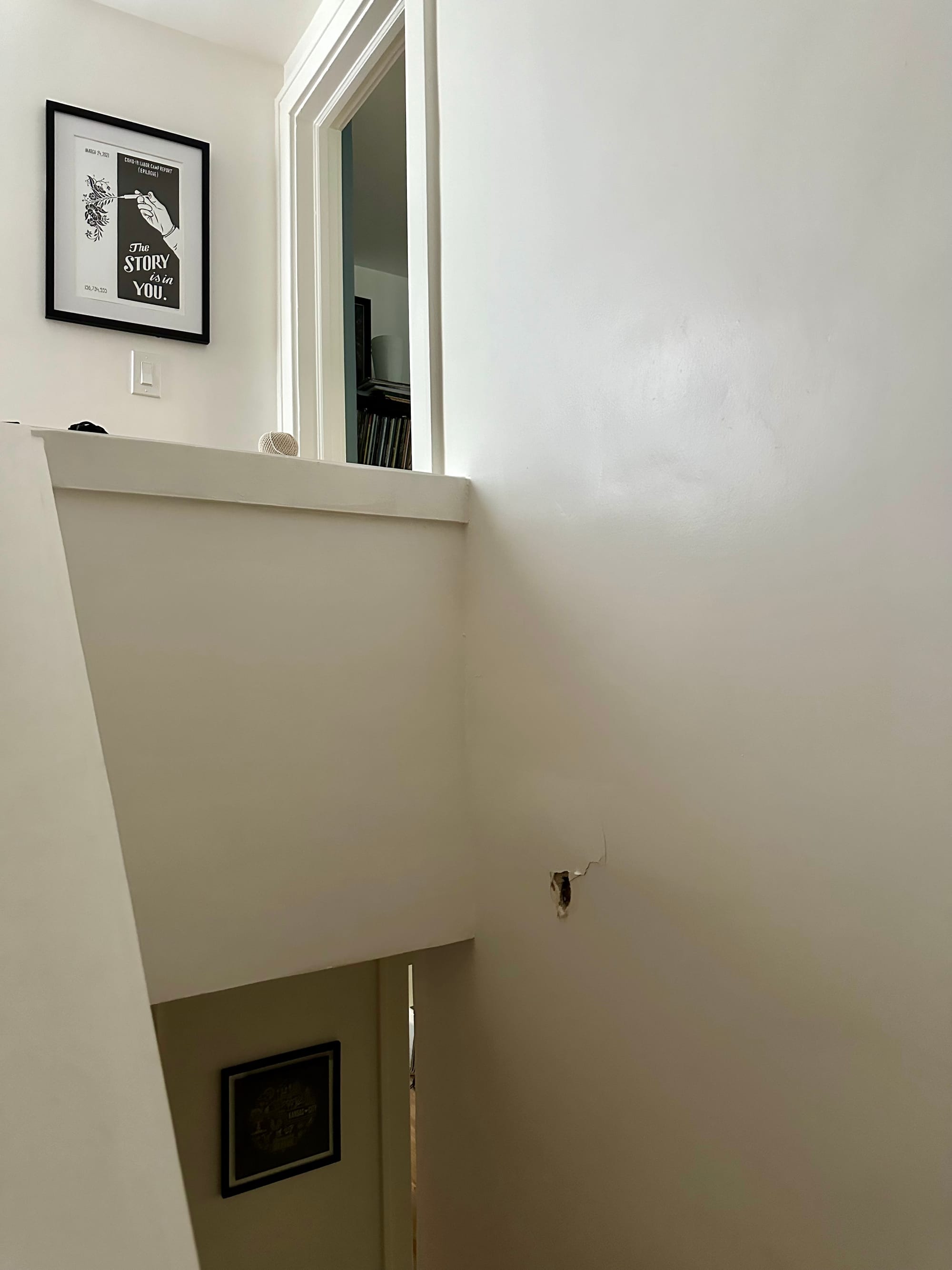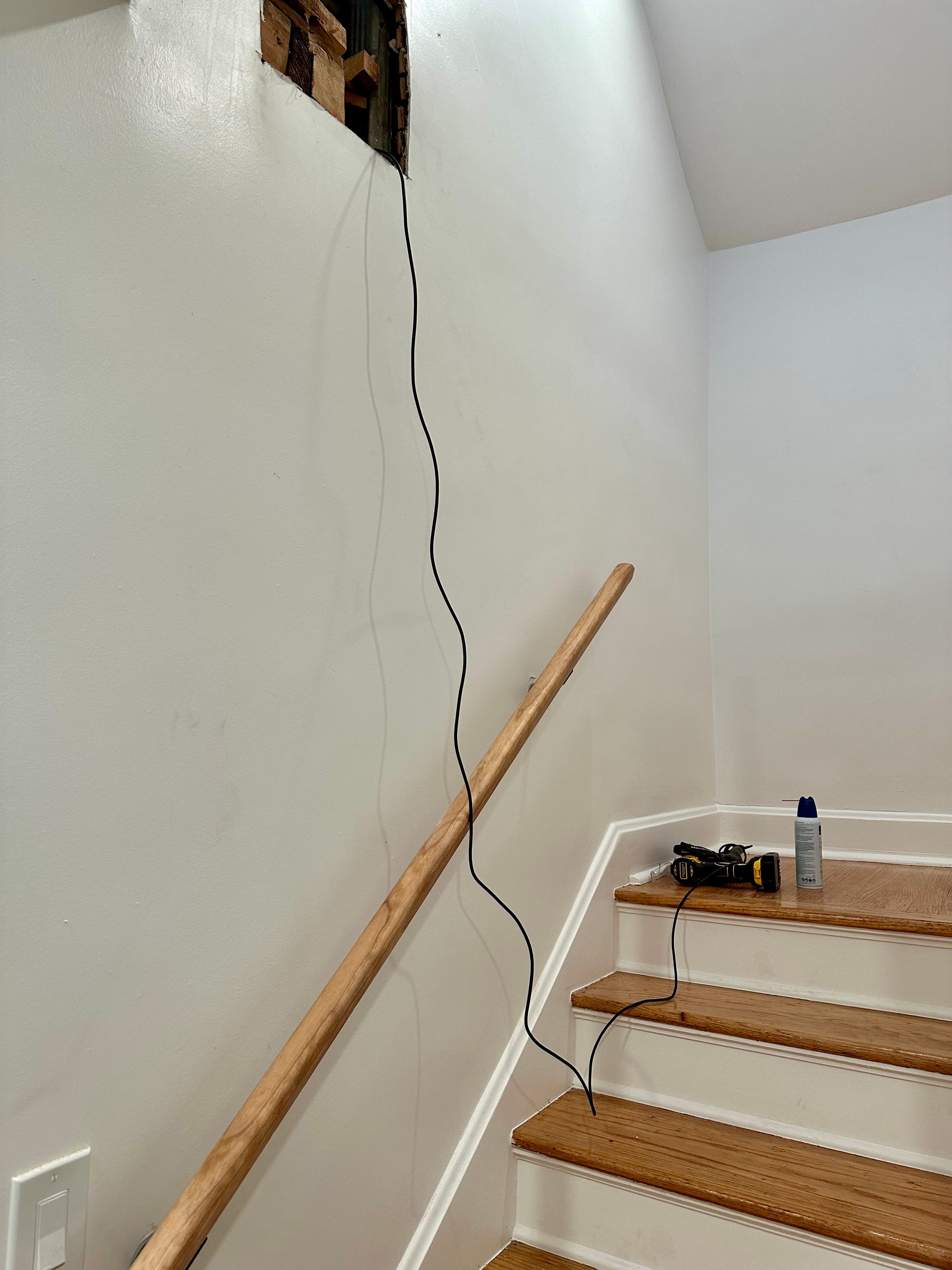My early home networking adventure
Or how I still love ethernet despite what it's done to me.

Here’s one thing about me: get me in front of a couple computer monitors, and I start hyperfixating on things. Get me in a new home, and I start thinking of projects to make my life more like a Rube Goldberg machine. Put these two things together, and you get me diving down the rabbit hole of over-engineered home networks.
I’ve long wanted a server rack in my home, tucked away somewhere quiet. I’ve just never had a good excuse to start building one until I bought my new home last year. I could start my home network from scratch, and wire rooms with Ethernet! I could setup multiple access points running through a PoE switch! I could finally have a better place to store my noisy NAS! So enter summer 2023, back when back-to-back gout flares kept me largely inside and mostly sitting in front of screens. I carved out part of my home improvement budget and bought a few things:
- A UniFi Dream Machine SE and a couple U6 access points (one Pro, one Long Range) from my local Micro Center
- A 25-port patch panel, also from my local Micro Center
- An inexpensive 20U server rack from Amazon
- 500ft of shielded CAT6 cable, also from Amazon
- Tons of wiring tools (seriously too many)
Over the summer and throughout the fall, I hunkered down and built out the network I always wanted. It’s not complete yet and never will be, but here’s what I’ve got so far.
I knew I wanted to run Ethernet, so the first cables I ran went to the living room on the first floor. Since my basement is unfinished, I had easy access to run cabling to the first floor. I routed it along the floor joists and poked it up into the wall, cut an outlet box (I cut 3; 2 of them were for running mounted television cables vertically), and punched down 4 keystones on a single plate. That powers my home entertainment center, my gaming PC, a UniFi Flex Mini, and a UniFi U6 Long Range access point.
My office was another story. It took me a lot of effort to run cabling up to my office. It’s up on the second floor of the house, and I wasn’t too good at drilling and plaster repair (at least when I started!), so the first snag I ran into was that I couldn’t get my drill into the box I cut. So I made the box bigger, and I still couldn’t do it. So I bought a flexible auger bit and tried to bend-drill it, and my drill bit kept getting stuck.

So finally I bought a big-ass 1” wood auger that was like 10” long and accidentally punched through the wall into my stairwell with it instead of drilling straight down.

I took this as a gift to let me run cabling easier through the subfloor between the first and second floors, and widened the hole, and then spent another week off-and-on trying to run the cabling up taped to rigid fish tape with an endoscopic camera as part of the rig, and then bought a multi-piece fish stick because even more rigidity was necessary.

I finally got the first cable run which made the second cable much more easy to run, and then I used drywall to patch the multiple holes I made. This whole process took me a couple months off-and-on, but I was incredibly happy with the result when I was done. The 2 Ethernet cables I ran power a UniFi U6 Pro access point and another UniFi Flex Mini, which lets me tether my PC, my Steam Deck, my laptops, and more.
I might do more cabling in the future, but that had me pretty beat and honestly set for a good few years. Instead I turned my attention to bolstering my servers, including setting up my Pi-Hole (2 of them) with Unbound, adding load balancers, and even a whole Kubernetes cluster. But that’s the subject for another post!
